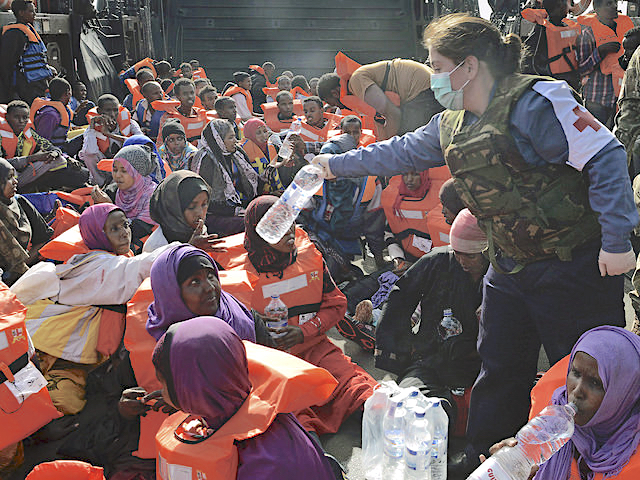On April 7, Rakhmat Akilov was arrested while covered in blood and glass in Marsta, a suburb north of Stockholm. Four days later, Rakhmat admitted to stealing a Spendrups beer truck and driving it into the Ahlens department store in Drottninggattan, killing four people and injuring fifteen others. Rakhmat’s Uzbek nationality, and Sunni Muslim background, and well-publicised correspondence with an ISIS supporter, all but guarantee a racially-charged response.
The far-right Sweden Democrats are likely to expand their growing influence amidst an increase in hate crimes and intolerance. Mindful of the polls, the Swedish government is likely to pass new counterterrorism measures, and approve stronger deportation rules, in spite of already toughened immigration laws.
That being said, the lorry attack is not entirely surprising. It is clear that Rakhmat, who waited two years to hear about his case before he was given four weeks to leave, and was fired for falling asleep on the job, suffered greatly from his attempted immigration to Sweden. As a result, he joined networks associated with Islamic State, enabling the violence. However, Rakhmat’s traumatic experience as an asylum seeker has not been sufficiently explored, as a result of his age, ethnic background, and of course, the horrific bloodshed of the attack itself.
Together, these factors make his trauma seem illegitimate, which is why it isn’t discussed as a reason that he committed an act of terror. In accounting for refugee violence, this is not uncommon. A Rachel Aviv article in The New Yorker about children with uppgivenhetssyndrom (“resignation syndrome”), published during the same week as the lorry attack, is a good case in point.
Resignation syndrome affects hundreds of refugee children living in Sweden, many of them from Eastern Europe. The disease is ‘contracted’ when victims learn that their families’ asylum claims have been rejected. In response, the children’s bodies shut down, and they become de apatiska (“the apathetic”), having seemingly lost the will to live. Aviv focuses largely on a Russian boy named Giorgio, who is presented as a scared child initially overwhelmed by the news that his Afghan floor-hockey teammate has been deported.
Giorgio becomes sullen, stops speaking Russian, and scolds his family for not assimilating into Swedish society. When his family receives a letter saying that their asylum claim has been rejected, which Giorgio translates, he is consumed by feelings of anger and powerlessness and falls sick with the disease. For months, he lies motionless in his bed, having to be fed through a tube, totally resigned to the horror of the situation.

Aviv understates the worst parts of the Swedish reaction. Resigned children and their families have frequently been accused of making up the disease to get permanent residency. Nevertheless, a liberal outcry did pressure the government to respond in a more humane manner.
Forty-two psychiatrists signed an open letter to the Swedish Minister of Justice and Migration, urging him to understand that Sweden’s new asylum restrictions had effectively caused the disease. Children were sick because of longer wait times, with some families being in limbo for years, and also, due to the intense fear of being forced to return to dangerous home countries. The government has now begun granting the families of some resigned children (others have been deported) permanent residency, which in the case of Giorgio, healed the illness within a year.
Stockholm’s eventual generosity is welcome, along with its implicit recognition that their families’ sense of precariousness was a serious problem. However, it is also difficult to stomach in light of the government’s mistreatment of asylum seekers like Rakhmat. These are men who also face a tightening immigration system, and lead similarly unstable lives, but rarely benefit from public and institutional sympathy.
The reason why is obvious. Rakhmat and Giorgio are both refugees, but the latter is much younger, lighter skinned, and fled a majority Christian country. Rakhmat, on the other hand, is a brown man in his thirties, a father of four children, and a Sunni Muslim from a Central Asian country. His religion, age, and ethnicity mean that he will never receive the same treatment as Giorgio.
These disparities are both reflected, and reinforced, in their reactions to impending deportation. Giorgio’s resignation syndrome is a haunting display of a traumatised person giving into their abusive environment, but it is also passive. The illness is moving because it isn’t actually threatening. Children respond to oppressive conditions by shutting down and harming themselves, but only themselves.
Rakhmat, on the other hand, lashed out against other people after waiting for two years to hear about his case and receiving a letter in December 2016 that his application had been denied. He evaded police, was placed on a wanted list in February and began smoking and drinking heavily, clear evidence of his despair. Eventually, after speaking to an ISIS supporter on WhatsApp, he drove a truck into a popular department store.
Islamic State’s involvement needs to be discussed carefully. While it is true that Rakhmat was conversing with a Tajik man who supports the group, ISIS did not itself plan the attack. It also didn’t explicitly recruit Rakhmat through an operative. Rather, he was drawn towards an ISIS-based online community as a lonely, distressed, and hopeless person. Islamic State is often said to be responsible for lorry attacks in Europe, but the group’s actual involvement is minimal. Often, it doesn’t command lorry attackers. Instead, it nurtures a virtual space for vulnerable people, and brands itself as a voice for oppressed Sunni Muslims, trusting that men like Rakhmat will individually plan their own attacks and choose the group as their banner.
It is telling that Prime Minister Stefan Löfven responded to reports of his failed asylum case by stating, “it makes me extremely frustrated, if you have been turned down, leave the country.” The compassion that was present with Giorgio is nonexistent. No effort is made to think about whether Rakhmat was responding to similar pressures as Giorgio. Instead, Lofven is scolding a failed asylum seeker for refusing to do as he is told. Rakhmat’s reaction was not passive, and as a result, it is branded illegitimate, and undeserving of Swedish empathy.
For Stockholm to behave differently, it would have to accept responsibility for its increasingly xenophobic stance. This seems unlikely, given the changing political climate in the country. In 2006, the Swedish government released a report linking resignation syndrome to “holistic cultures” where it is “difficult to draw boundaries between the individual’s private sphere and collective domain.” The government’s reponse is that it’s a foreign problem, in spite of the fact that uppgivenhetssyndrom has only ever been diagnosed in Sweden.
Rakhmat’s Muslim background has been blamed for his lorry attack in a similar move, which erases the link between Sweden, and the violence that asylum seekers both experience and carry out. Rakhmat’s violence is treated as a religious problem in Sweden, in much the same way that Giorgio’s resignation syndrome is framed as arising from unassimilated immigrant cultures in the country. In the context of a rising extreme right, Sweden seems primed to continue linking social problems to the presence of foreigners, rather than engaging with their Swedish context. The result will be more attacks and more resigned children.
Photographs courtesy of ABCNews and Paul Arps. Published under a Creative Commons License.





